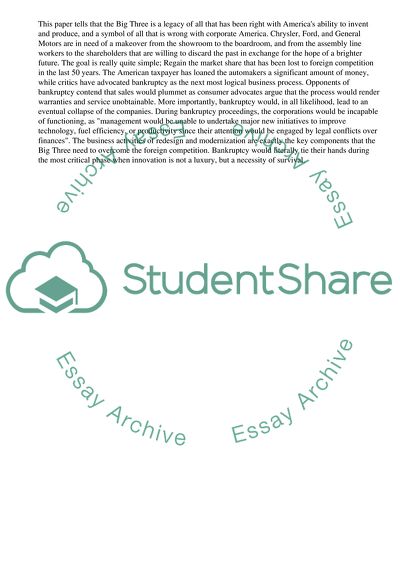Cite this document
(“America's Big Three Automakers Research Paper Example | Topics and Well Written Essays - 1750 words”, n.d.)
America's Big Three Automakers Research Paper Example | Topics and Well Written Essays - 1750 words. Retrieved from https://studentshare.org/business/1724223-current-economic-analysis-of-the-us-automotive-industry
America's Big Three Automakers Research Paper Example | Topics and Well Written Essays - 1750 words. Retrieved from https://studentshare.org/business/1724223-current-economic-analysis-of-the-us-automotive-industry
(America'S Big Three Automakers Research Paper Example | Topics and Well Written Essays - 1750 Words)
America'S Big Three Automakers Research Paper Example | Topics and Well Written Essays - 1750 Words. https://studentshare.org/business/1724223-current-economic-analysis-of-the-us-automotive-industry.
America'S Big Three Automakers Research Paper Example | Topics and Well Written Essays - 1750 Words. https://studentshare.org/business/1724223-current-economic-analysis-of-the-us-automotive-industry.
“America'S Big Three Automakers Research Paper Example | Topics and Well Written Essays - 1750 Words”, n.d. https://studentshare.org/business/1724223-current-economic-analysis-of-the-us-automotive-industry.


